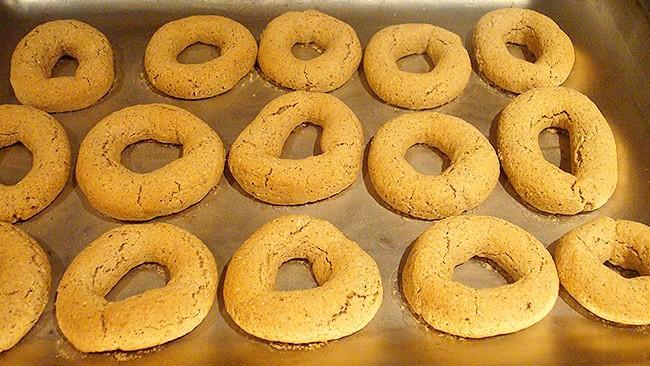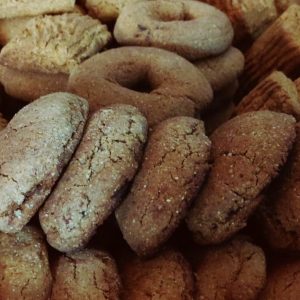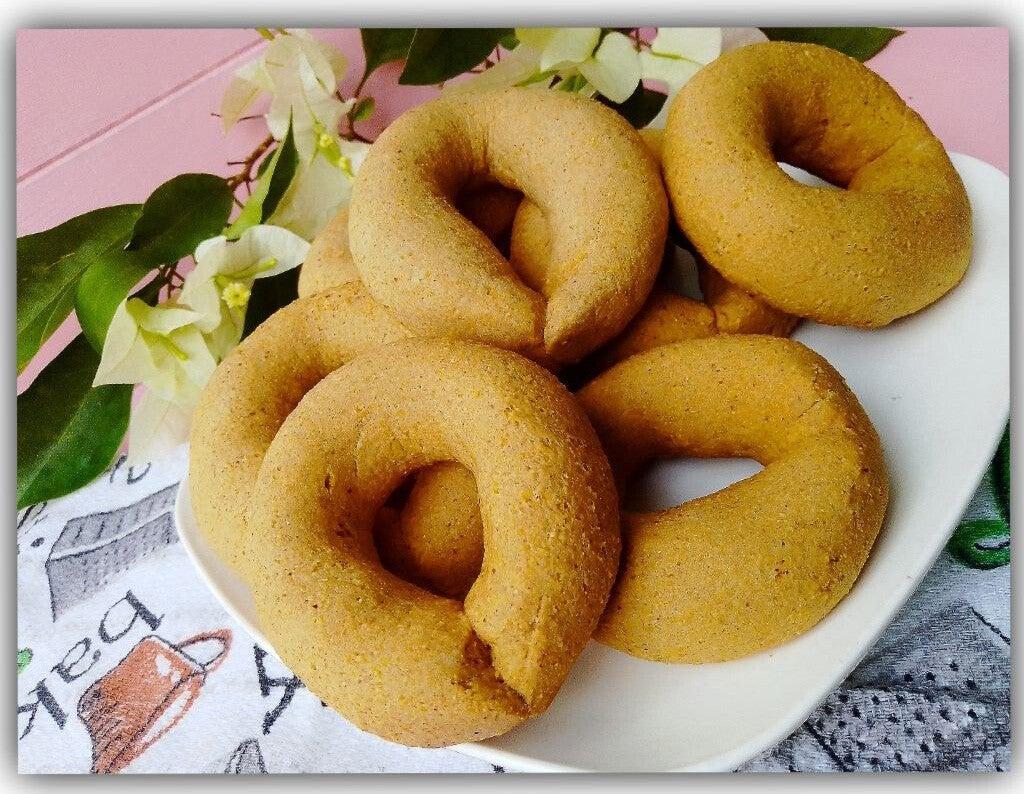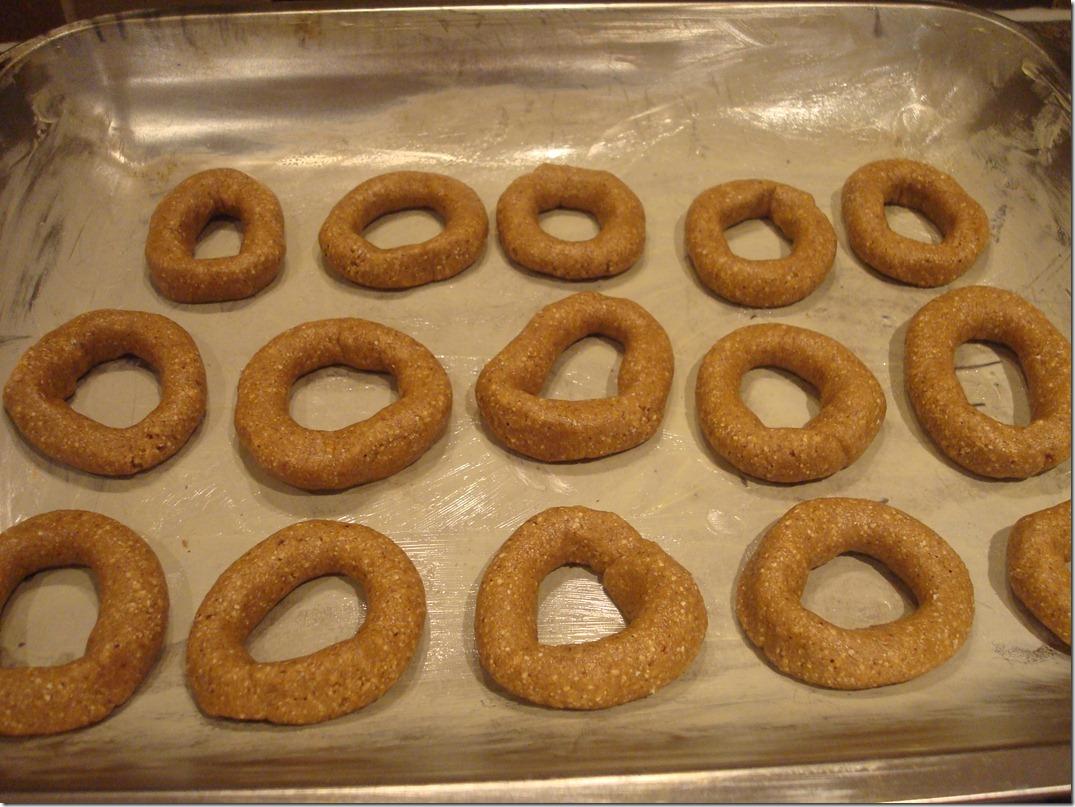Join me on a culinary adventure as we dive into the world of Spanish cuisine with a recipe that holds a special place in my heart: Spanish Bread Loaves (Pan de Horno). Picture yourself savoring the irresistible aroma of freshly baked bread, the softness of the dough melting in your mouth, and the delightful flavors that transport you to the heart of Spain. Let’s roll up our sleeves and create magic in the kitchen together!


Spanish Bread Loaves (Pan de Horno)
Equipment
- 1 large mixing bowl
- 1 greased bowl
- 1 damp kitchen towel
Ingredients
- 3 cups warm water
- 1 1⁄2 tablespoons bread yeast
- 7 cups all-purpose flour
- 1⁄4 cup olive oil
- 2 teaspoons salt
Instructions
- Stir the yeast into the warm water and set it aside to develop, about 10 minutes.
- Sift the flour and salt into a large mixing bowl, and work in the oil using your fingertips.
- Working slowly and still using your hands, mix in the yeast mixture until a firm dough is formed.
- Transfer the dough to a floured work surface, and knead until it is smooth and elastic, 10–15 minutes.
- Grease a bowl and put in the dough, turning to coat. Cover it with a damp kitchen towel, and set it aside to rise until it has doubled in size (1–2 hours, depending on your yeast and the temperature of the room).
- Turn out the dough again onto a floured surface, and knead it again until all the air bubbles are removed. Return it to the bowl to rest for 15 minutes.
- Preheat the oven to 450°F.
- Cut the dough into little loaves or buns, according to your preference. Cut slits in the top, if desired. Allow the dough to rise in the pans for 30 minutes.
- Bake for 30–50 minutes until the loaves sound hollow when you knock on them.
Video
Notes
Cooking Tips

To ensure exceptional results when making Spanish Bread Loaves (Pan de Horno), it’s essential to pay attention to every detail and embrace a few expert cooking tips. By following these insights and avoiding common mistakes, you’ll achieve bakery-worthy bread that will leave everyone asking for more. Let’s dive into the world of culinary craftsmanship and uncover the secrets of creating the perfect Spanish Bread Loaves.
Use High-Quality Ingredients for Authentic Flavors
To achieve the authentic flavors of Spanish Bread Loaves, it’s crucial to start with high-quality ingredients. Opt for premium bread flour, which has a higher protein content, resulting in a better structure and texture. Also, use fresh yeast or active dry yeast to ensure proper rising. These simple choices will make a significant difference in the final taste of your bread.
Knead with Care and Precision
Proper kneading is the key to developing the desired texture in your Pan de Horno. Take your time to knead the dough until it becomes smooth, elastic, and slightly tacky. This process helps activate the gluten, allowing the bread to rise properly and develop its characteristic airy crumb. Remember to use a light touch and avoid adding excessive flour during the kneading process.
Allow Sufficient Time for Proofing
The proofing phase is crucial for developing the flavors and structure of the bread. Once the dough is shaped into loaves, place them in a warm, draft-free area to rise. Be patient and allow ample time for the dough to double in size. This slow fermentation process enhances the taste and texture of the bread, resulting in a more flavorful and tender crumb.
Serving Suggestions

As you savor the delightful flavors of freshly baked Spanish Bread Loaves (Pan de Horno), let’s explore the exciting world of serving suggestions. Whether you’re hosting a casual family gathering or a sophisticated dinner party, these recommendations will enhance your dining experience and delight your guests. From complementary sides and garnishes to creative presentations, there’s a serving suggestion for every occasion. Let’s dive in and discover the endless possibilities of savoring Spanish Bread Loaves.
- When to Use: Brunch is the perfect occasion to showcase the versatility of Pan de Horno. The combination of fluffy bread and aromatic flavors pairs wonderfully with a brunch spread.
- Audience: Ideal for gatherings with friends and family who appreciate a delightful morning or midday feast.
- Recommended Sides, Garnishes, and Beverages: Accompany the bread with a selection of fresh fruits, such as sliced strawberries or oranges, to add a burst of freshness. Serve alongside a variety of spreads, such as whipped honey butter or citrus-infused cream cheese. Complement the flavors with a fruity iced tea or a refreshing glass of sparkling lemonade.
- Serving Suggestions: Slice the Pan de Horno into thick slices and lightly toast them. Arrange on a platter with the sides, garnishes, and beverages for a beautiful and inviting brunch spread. Encourage your guests to create their own customized bread creations by spreading their favorite toppings.
FAQs about Spanish Bread Loaves (Pan de Horno)

As you embark on your journey to create the perfect Spanish Bread Loaves (Pan de Horno), it’s natural to have some questions along the way. In this FAQ section, we address the most common queries that may arise during your baking adventure. From storage tips to ingredient substitutions, we’ve got you covered. Let’s dive in and ensure all your doubts are resolved.
Can I Freeze Pan de Horno for Later?
Yes, you can freeze Pan de Horno to enjoy them at a later time. Once the bread has cooled completely, wrap it tightly in plastic wrap or place it in a freezer-safe bag. Ensure there is no excess air trapped inside. Frozen Spanish Bread Loaves can be stored for up to 3 months. To thaw, simply leave the bread at room temperature for a few hours or overnight.
What if I Don’t Have Bread Flour? Can I Use All-Purpose Flour Instead?
While bread flour is commonly used for Spanish Bread Loaves, you can substitute it with all-purpose flour if needed. Keep in mind that all-purpose flour has a lower protein content, which may result in a slightly denser texture. To compensate, you can add a tablespoon of vital wheat gluten per cup of all-purpose flour to increase the protein content and improve the structure of the bread.
How Do I Store Leftover Pan de Horno?
To store leftover Pan de Horno, allow them to cool completely and then place them in an airtight container or resealable bag. Store at room temperature for up to 3 days. If you live in a humid environment, it’s best to store the bread in the refrigerator to prevent mold growth. Before serving, you can reheat the bread in a preheated oven at 350°F (175°C) for a few minutes to restore its freshness.
Can I Add Nuts or Dried Fruits to the Spanish Bread Loaves?
Absolutely! Adding nuts, such as chopped almonds or walnuts, or dried fruits, like raisins or cranberries, can add delightful textures and flavors to your Spanish Bread Loaves. Mix them into the dough during the initial mixing stage, ensuring they are evenly distributed. Be mindful of the quantity to avoid overwhelming the bread with excessive add-ins.
Can I Make Mini Spanish Bread Loaves or Rolls Instead?
Certainly! If you prefer individual portions or bite-sized treats, you can shape the dough into mini bread loaves or rolls. Adjust the baking time accordingly, as smaller portions will require less time in the oven. Keep an eye on them to ensure they are baked to perfection, with a golden crust and a soft interior.
Master the art of baking Spanish Bread Loaves with our expert cooking tips. Learn about ingredient selection, proper kneading, and the importance of sufficient proofing. Avoid common mistakes and achieve bakery-worthy results. Share your own tips and tricks while subscribing to our blog for more culinary inspiration.
